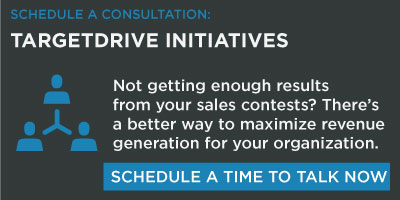 With a blog title like that, you may be questioning my sanity. Why would you want to fire your best prospect before you've had the chance to even get a meeting? I assure you my thought process here is sane and relates to a problem I see many salespeople face. Sometimes you hang onto prospects, even the very best prospects, too long and it becomes a waste of time and misguided focus that could better serve you to work on other leads.
With a blog title like that, you may be questioning my sanity. Why would you want to fire your best prospect before you've had the chance to even get a meeting? I assure you my thought process here is sane and relates to a problem I see many salespeople face. Sometimes you hang onto prospects, even the very best prospects, too long and it becomes a waste of time and misguided focus that could better serve you to work on other leads.
Hanging on and not letting go of what feels like a great prospect is likely because either you have 1) put a ton of planning and effort in already, and if you did have a breakthrough some point, it would be a great win for you and your company or 2) if you let it go maybe someone one else might get that win along with the payout and that doesn’t feel good! Either way, hanging on too long is bad for your business.
Typically, you identify great prospects by the amount of money they can spend on your products or services and your access to the person who calls the shots. That’s why you want to call on them. But there’s also another qualifier. The likelihood of a prospect engaging with you happens for two reasons. Either they are in a growth mode or a pain mode. Otherwise, they feel things are just fine at the moment and with time as scarce as it is for all of us, why would they want to engage right now? This doesn’t mean they are not a good prospect, but rather not a good prospect right now.
Speaking of time, it’s in your best interest to take that time you put into a prospect who isn’t ready to buy now with those who are. So how do you determine when to move on or whether you should keep trying? It’s the question I’m always asked when I challenge salespeople on whether they are actually calling on a great prospect or not. Here’s what I recommend you do to help you decide:
Approach your prospect with a greater amount of frequency in a shorter amount of time. I often recommend 7 to 9 times in under 3 weeks. Think you’ll be seen as a stalker? Think again. Many times, the prospect doesn’t even realize the first few times you’ve tried to connect, and if you are providing a valid business reason in your approach, you’ll be seen as persistent with a purpose verses a persistent pain in the you-know-what.
So be thoughtful in your approach as well as swift. Waiting a few weeks in between each attempt will slow you down, and you’ll never really know if you should fire your best prospect before you get a chance to meet. Letting go can be uncomfortable, but if you apply the process I recommend, you’ll save time, have greater focus on activity, and open yourself up to finding even better prospects you can impact now.



